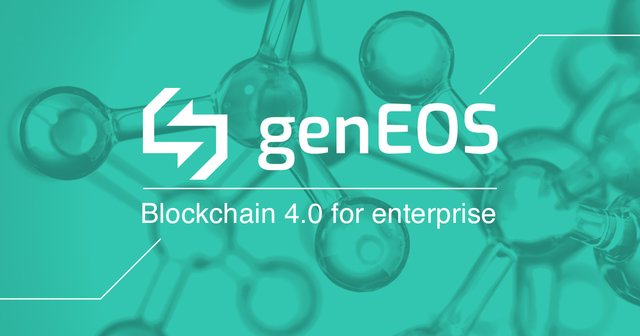Why use genEOS when you can build Dapps on Ethereum?

There’s already a blockchain that lets you build and run decentralized Applications (Dapps) for businesses, monetize them, customize them… so why wouldn’t you just use that? After all, it’s the most effective, flexible blockchain solution out there that’s up and running, which is why businesses with blockchain-based offerings are turning to it in such numbers - and why Ethereum has 30X more developers than the next-largest blockchain.
So with all that, why not just use Ethereum?
Ethereum is the story of errors and problems fixed piecemeal over time. It’s evolved. Its consensus algorithm, its internal developer economy and even the famous EVM are all best-effort fixes for problems that are baked right into Ethereum and every blockchain like it.
Consensus Algorithm, Work and Scaling
Originally Ethereum used the Proof-of-Work consensus algorithm: the right to produce new blocks was won by performing a certain number of computer cycles, as in Bitcoin. But this algorithm is prohibitively expensive in resources, in time and in money.
Bitcoin can handle just seven transactions per second, thanks to its unwieldy consensus algorithm. Ethereum’s PoW structure incurs US$1.2 billion a year in Ether mining costs, and the blockchain is currently capable of around 15 transactions per second. So now, Ethereum is moving over to using Proof-of-Stake (PoS) consensus.
But genEOS was built, not to solve these problems, but rather to never have them. The Delegated proof-of-Stake algorithm used by genEOS combines maximal real-world rather than theoretical decentralization (guarding against 51% attacks inherently, for instance) with maximal scalability. Costs generated in mining? Zero.
And unlike direct-participation consensus blockchains like PoS, increasing user numbers does not increase the number of accounts required to sign off on a new block; the decentralization happens a step back from block signing, at the voting and delegation stage. More users means more liquidity, more ideas, more applications - but not slower transactions.
When a more efficient consensus algorithm is allied with parallel performance and application scheduling across multiple CPUs and clusters, genEOS is theoretically capable of much faster speeds than Ethereum.
Website users who click away in two seconds or less. The time limitations users expect from applications are even more stringent:
To attract end users, this is the bar: to compete, blockchain technology must clear it. genEOS can.
Virtual Machine: The last word in Dapps?
Ethereum Virtual Machine was and is groundbreaking. But it’s not a long-term solution to Dapp development, deployment and adoption.
EVM is a runtime environment that runs on top of the Ethereum blockchain. But it represents an incomplete attempt to build a productivity environment on the blockchain; EVM still requires extensive programming skills.
For example, here’s an excerpt from a guide to EVM:
That’s simple if you’re an experienced blockchain developer. But compare it to a mobile app building tool aimed at businesses:
The difference jumps out at you. Compared to the tools available on the wider, traditional web, everything about Ethereum is still hard.
On genEOS, an operating system-like development and deployment environment makes delivering web 2.0-like functionality a lot simpler.
Internal Economy: Out of gas?
Ethereum’s internal economy is another fix for a problem that’s built into its blockchain. Gas is the internal pricing system used to assign a cost to computing effort expended on the blockchain. In brief, you pay gas to get your actions added to Ethereum’s blockchain.
But again, it’s a fix for a problem that doesn’t even exist on genEOS: without the limitations of an older, more restrictive blockchain structure, genEOS is able to address these issues from the ground up.
When Dapp users approach the product, not only do they need to pay gas fees to have their actions entered on the Ethereum blockchain, but they don’t even know how much they’ll have to pay. This leaves Ethereum developers and users working to find a patch or workaround, like this:
But on genEOS, there’s no need for this. There’s no gas to pay, only a simple, transparent fee structure for businesses and end users alike. Again, it’s about baking solutions to these issues right into the architecture of genEOS from the off rather than fixing and patching them as they arise.
Conclusion
Ethereum seems the natural choice for businesses looking for a tested, proven Dapp environment. But that doesn’t mean it’s the right choice. The very fact that Ethereum developers are working so hard to overcome the problems inherent in the platform demonstrates the severity of those problems; while there’s no definitive ‘Ethereum killer’ blockchain on the market, there’s plenty of discussion about what that will have to look like. Ethereum is proof of value for blockchain, but it’s not the blockchain that’s ultimately going to deliver that value. And for businesses looking for somewhere to develop Dapps, genEOS is a much faster, more user-friendly choice.



